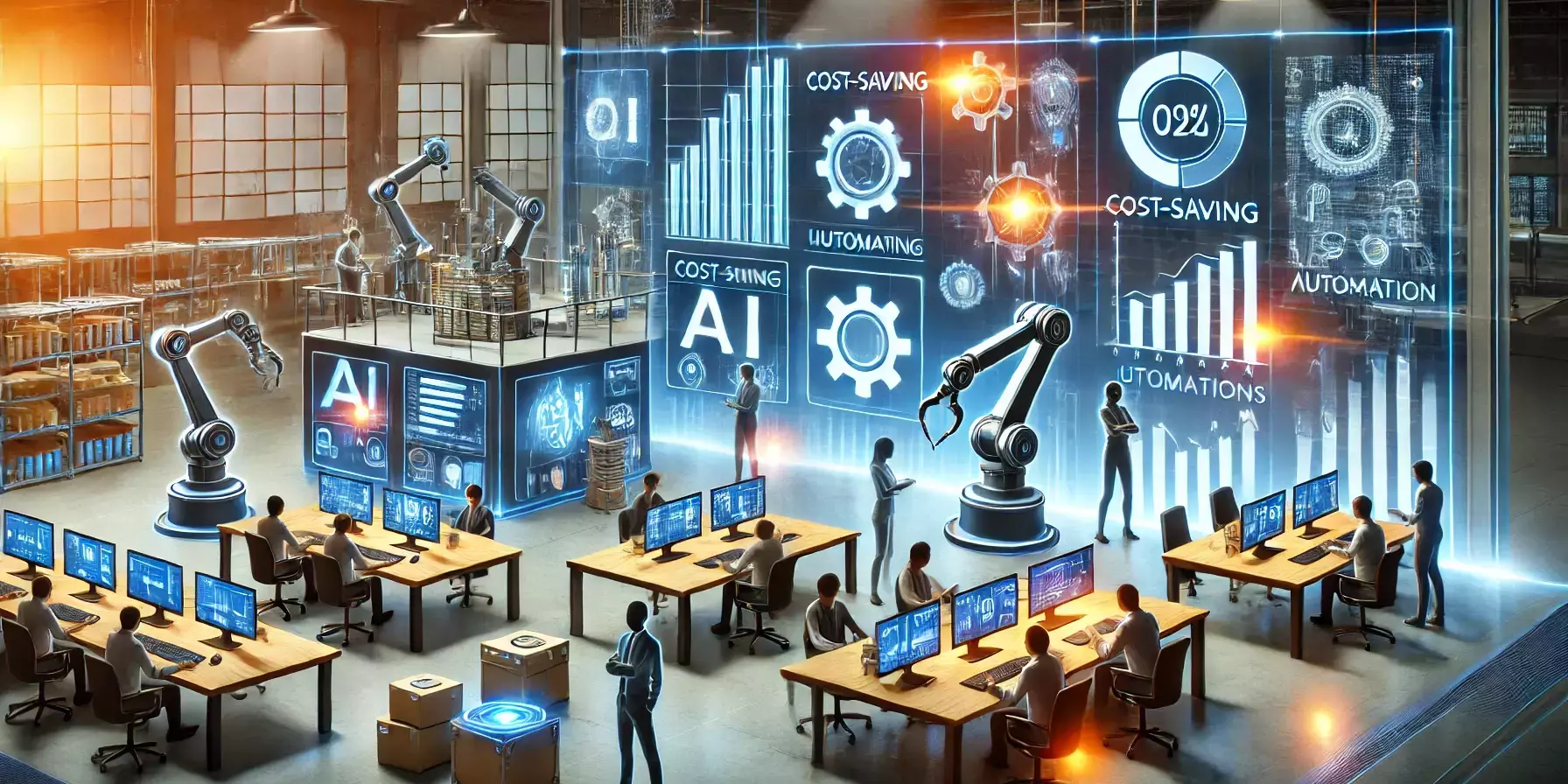
In a world of increasing competition and evolving customer expectations, businesses are constantly seeking ways to optimize costs while maintaining or even enhancing the quality of their products and services. Enter AI-powered automation—a transformative technology that allows organizations to reduce workforce costs by automating repetitive tasks, streamlining processes, and unlocking efficiencies without compromising quality.
For early adopters of generative AI (genAI), embracing AI automation offers a chance to lead the market, enhance operational resilience, and create more value for customers. This article explores how businesses can leverage AI automation to achieve cost savings while maintaining high-quality standards.
Why AI-Powered Automation Matters
AI automation combines the power of artificial intelligence and robotics to handle repetitive, time-consuming tasks with precision and consistency. Unlike traditional automation, AI can learn, adapt, and make decisions based on data, enabling businesses to:
- Reduce operational costs: Automating tasks minimizes the need for manual intervention, cutting labor costs.
- Enhance efficiency: AI performs tasks faster and more accurately, reducing errors and downtime.
- Improve scalability: AI systems can handle increased workloads without additional resources.
For early adopters, these benefits translate into a significant competitive edge.
Key Areas Where AI Automation Reduces Workforce Costs
1. Streamlining Administrative Tasks
Administrative work, such as data entry, scheduling, and invoice processing, consumes valuable time and resources. AI-powered tools can automate these processes, ensuring they are completed efficiently and accurately.
- Example: An accounting firm uses AI to automate invoice scanning, payment reconciliation, and report generation.
- Impact:
- Reduced need for manual data entry.
- Improved accuracy in financial records.
- Freed-up employees to focus on strategic initiatives.
Tools to Explore: UiPath, Blue Prism, and Kofax RPA.
2. Optimizing Customer Service with AI Chatbots
AI chatbots powered by natural language processing (NLP) can handle routine customer inquiries, resolve issues, and even upsell products, all without human intervention.
- Example: A retail company deploys an AI chatbot to assist customers with order tracking, returns, and FAQs.
- Impact:
- Reduced workload for customer service teams.
- 24⁄7 customer support, improving satisfaction and loyalty.
- Lower staffing costs while maintaining high-quality service.
Tools to Explore: ChatGPT-powered bots, Zendesk AI, and LivePerson.
3. Automating Manufacturing and Supply Chain Operations
In industries like manufacturing and logistics, AI-powered automation systems improve efficiency by managing production schedules, monitoring equipment, and optimizing supply chains.
- Example: A manufacturing plant uses AI to monitor machinery for potential breakdowns and schedule maintenance proactively.
- Impact:
- Reduced downtime and repair costs.
- Increased productivity through optimized scheduling.
- Lower staffing needs for monitoring and maintenance tasks.
Tools to Explore: Siemens MindSphere, GE Predix, and custom AI models for predictive maintenance.
4. Enhancing Talent Management and Recruitment
AI-powered tools streamline recruitment processes by screening resumes, conducting initial candidate assessments, and even automating onboarding.
- Example: A tech company uses AI to analyze resumes, rank candidates, and schedule interviews automatically.
- Impact:
- Shortened recruitment cycles, saving HR resources.
- Improved hiring quality with data-driven candidate evaluations.
- Reduced costs associated with lengthy hiring processes.
Tools to Explore: HireVue, LinkedIn Talent Insights, and Pymetrics.
5. Marketing Automation for Personalized Campaigns
AI-driven marketing platforms automate tasks like email campaigns, audience segmentation, and performance tracking. These tools create personalized customer experiences while reducing manual effort.
- Example: An e‑commerce brand uses AI to send tailored product recommendations based on browsing history and purchase patterns.
- Impact:
- Increased revenue through personalized marketing.
- Reduced need for large marketing teams.
- Enhanced customer engagement and retention.
Tools to Explore: HubSpot, Marketo Engage, and ActiveCampaign.
Balancing Cost Savings with Quality
While AI automation offers significant cost-saving opportunities, maintaining or enhancing quality must remain a priority. Here’s how early adopters can strike the balance:
1. Focus on High-Impact Tasks
- Automate repetitive, time-consuming tasks that don’t require human creativity or judgment.
- Example: Automating invoice processing while retaining human oversight for financial strategy.
2. Integrate Human Oversight
- Use AI to augment human capabilities rather than replace them entirely.
- Example: AI chatbots handle routine queries while escalating complex issues to human agents.
3. Invest in Training and Upskilling
- Equip employees with the skills to work alongside AI systems effectively.
- Example: Train marketing teams to use AI tools for data analysis and campaign optimization.
Real-World Examples of Success
Example 1: AI in Healthcare Administration
A hospital deployed an AI-powered scheduling system to manage staff shifts and patient appointments. The system reduced administrative overhead by 40%, allowing staff to focus on patient care without increasing costs.
Example 2: AI in Retail Customer Support
An online retailer implemented an AI chatbot, reducing customer service costs by 50% while maintaining a 95% satisfaction rate for routine queries.
Example 3: AI in Manufacturing
A car manufacturer adopted AI-powered predictive maintenance, saving $2 million annually by preventing unplanned equipment downtime.
The Future of AI Automation in Workforce Management
As AI technology advances, automation will continue to evolve, offering even greater opportunities for cost savings and quality improvements. Key trends include:
- Hyperautomation: Combining AI with robotic process automation (RPA) for end-to-end workflow optimization.
- Edge AI: Real-time decision-making at the point of need, such as in factories or remote healthcare settings.
- AI for Workforce Analytics: Advanced tools for predicting workforce needs and optimizing team structures.
Conclusion: Embrace the AI Advantage
For early adopters, AI-powered automation is more than a tool — it’s a strategic advantage. By automating repetitive tasks, businesses can significantly reduce workforce costs while maintaining or even enhancing the quality of their services.
The key to success lies in starting small, focusing on high-impact areas, and integrating AI systems thoughtfully. With the right approach, businesses can lead the charge in an AI-driven future, delivering value to customers and stakeholders alike.
The journey to automation begins now — take the first step and discover what AI can do for your business.